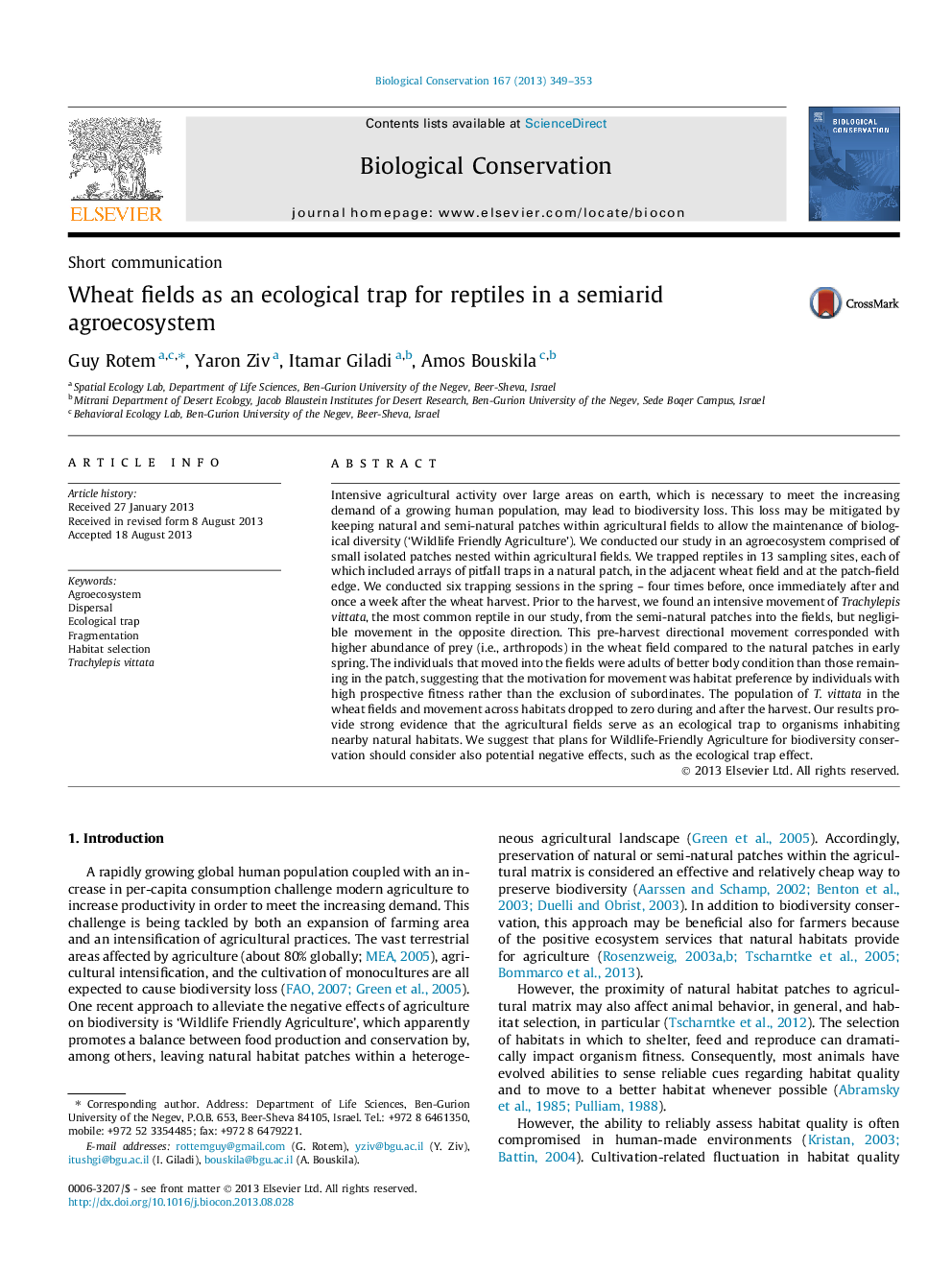| کد مقاله | کد نشریه | سال انتشار | مقاله انگلیسی | نسخه تمام متن |
|---|---|---|---|---|
| 6300674 | 1617934 | 2013 | 5 صفحه PDF | دانلود رایگان |
عنوان انگلیسی مقاله ISI
Wheat fields as an ecological trap for reptiles in a semiarid agroecosystem
ترجمه فارسی عنوان
گندم به عنوان یک تله اکولوژیک برای خزندگان در یک سیستم کشاورزی نیمه خشک
دانلود مقاله + سفارش ترجمه
دانلود مقاله ISI انگلیسی
رایگان برای ایرانیان
کلمات کلیدی
موضوعات مرتبط
علوم زیستی و بیوفناوری
علوم کشاورزی و بیولوژیک
بوم شناسی، تکامل، رفتار و سامانه شناسی
چکیده انگلیسی
Intensive agricultural activity over large areas on earth, which is necessary to meet the increasing demand of a growing human population, may lead to biodiversity loss. This loss may be mitigated by keeping natural and semi-natural patches within agricultural fields to allow the maintenance of biological diversity ('Wildlife Friendly Agriculture'). We conducted our study in an agroecosystem comprised of small isolated patches nested within agricultural fields. We trapped reptiles in 13 sampling sites, each of which included arrays of pitfall traps in a natural patch, in the adjacent wheat field and at the patch-field edge. We conducted six trapping sessions in the spring - four times before, once immediately after and once a week after the wheat harvest. Prior to the harvest, we found an intensive movement of Trachylepis vittata, the most common reptile in our study, from the semi-natural patches into the fields, but negligible movement in the opposite direction. This pre-harvest directional movement corresponded with higher abundance of prey (i.e., arthropods) in the wheat field compared to the natural patches in early spring. The individuals that moved into the fields were adults of better body condition than those remaining in the patch, suggesting that the motivation for movement was habitat preference by individuals with high prospective fitness rather than the exclusion of subordinates. The population of T. vittata in the wheat fields and movement across habitats dropped to zero during and after the harvest. Our results provide strong evidence that the agricultural fields serve as an ecological trap to organisms inhabiting nearby natural habitats. We suggest that plans for Wildlife-Friendly Agriculture for biodiversity conservation should consider also potential negative effects, such as the ecological trap effect.
ناشر
Database: Elsevier - ScienceDirect (ساینس دایرکت)
Journal: Biological Conservation - Volume 167, November 2013, Pages 349-353
Journal: Biological Conservation - Volume 167, November 2013, Pages 349-353
نویسندگان
Guy Rotem, Yaron Ziv, Itamar Giladi, Amos Bouskila,
